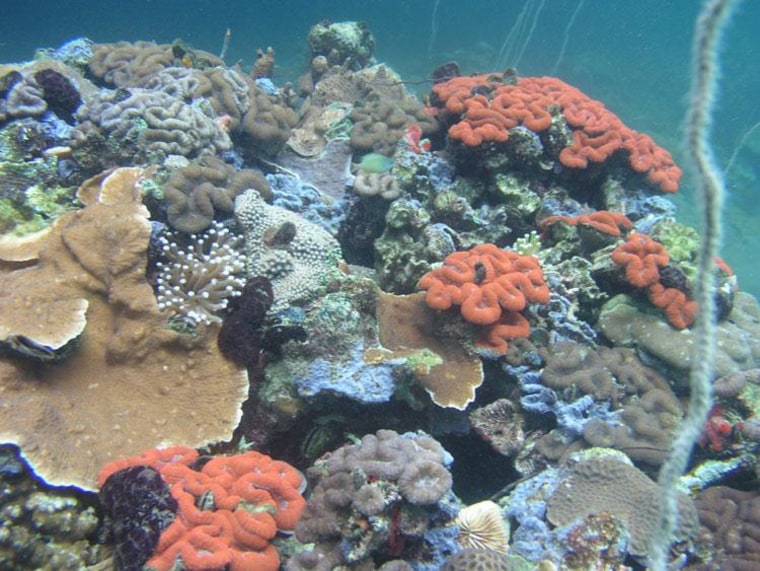The growing acidity of the world's oceans is a worrying threat to coral reefs, which support an amazing array of marine life, and are generally harmed as ocean acidity rises. But a vibrant reef in the western Pacific Ocean is bucking this trend: Researchers have found that the coral there thrives, rather than suffers, in locally acidic conditions.
Coral reefs grow by extracting calcium and carbonate ions from seawater and combining them to form calcium carbonate, the same hard mineral found in clam and snail shells. Both calcium and carbonate are generally abundant in seawater; however, as water becomes more acidic, carbonate levels drop and organisms struggle to gather enough to form their outer skeletons.
Given this basic chemistry, researchers at the Woods Hole Oceanographic Institution (WHOI) were recently surprised to find a healthy, expansive coral reef ecosystem in the western Pacific islands of Palau thriving in acidity levels that laboratory studies have shown to slow or even stunt growth in other corals. [Photos: Underwater Google Street View Reveals Stunning Corals]
"I was shocked to see how high the levels of acidity were," study co-author Katie Shamberger told LiveScience.
Contrary to what previous field and laboratory findings have suggested for reefs elsewhere, the researchers found the diversity and expansiveness of the reef was greater than neighboring reefs with lower levels of acidity, Shamberger, who at the time of the discovery was working with WHOI but now works at Texas A&M University, said.
The researchers do not know how or why these corals survive so well in these seemingly sour conditions, but think that some unique combination of chemical and biological factors override the negative influence of the acidity, Shamberger said.
While the findings are compelling, they don't necessarily spark hope for other corals around the world that appear to be suffering fromhuman-induced ocean acidification — the process by which carbon dioxide from fossil fuel emissions dissolves in seawater and forms carbonic acid. This process occurs at different rates around the world depending on physical and chemical conditions, and is generallymore severe in colder regions because carbon dioxide dissolves more easily in cold water.
The researchers think that these acidic conditions have existed for thousands of years, potentially giving organisms a chance to evolve or adapt. Human-induced acidification, on the other hand, has occurred at a much faster rate and has not necessarily allowed affected reefs to adjust in the same way, Shamberger said. Still, the degree to which the Palau reef has genetically changed over time to adjust to the changes remains unclear, she noted.
This is a condensed version of a report from LiveScience. Read the full story.
- Laura Poppick, LiveScience
Follow Laura Poppick on Twitter. Follow us @livescience, Facebook & Google+. Original article on LiveScience.
- Colorful Creations: Incredible Coral
- 6 Unexpected Effects of Climate Change
- Gallery: Peek Inside a Coral Nursery
Copyright 2014 LiveScience, a TechMediaNetwork company. All rights reserved. This material may not be published, broadcast, rewritten or redistributed.
